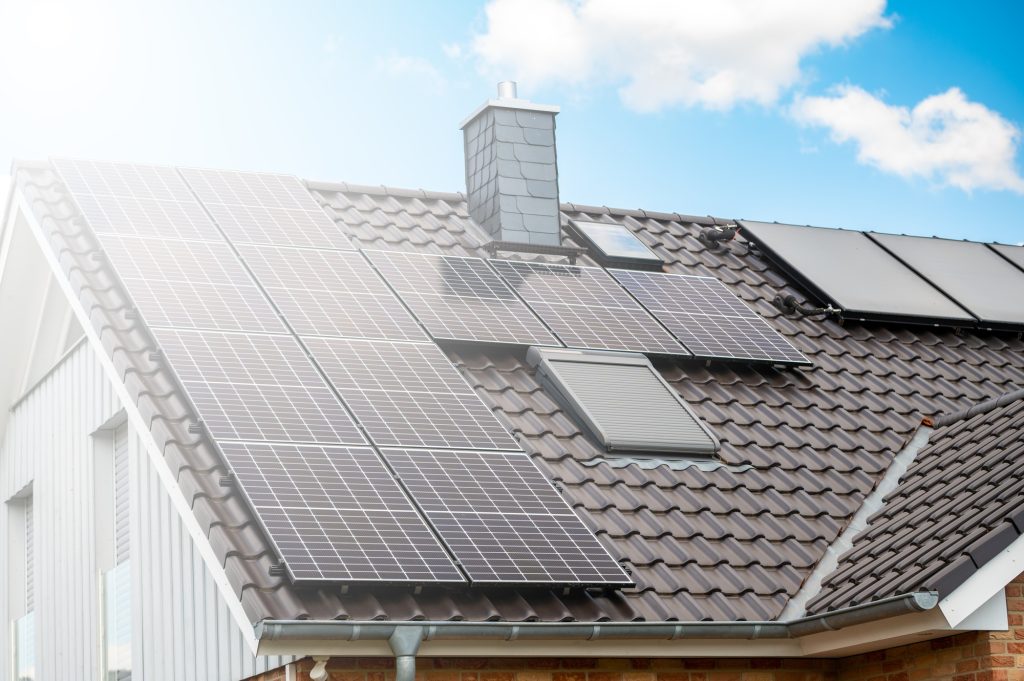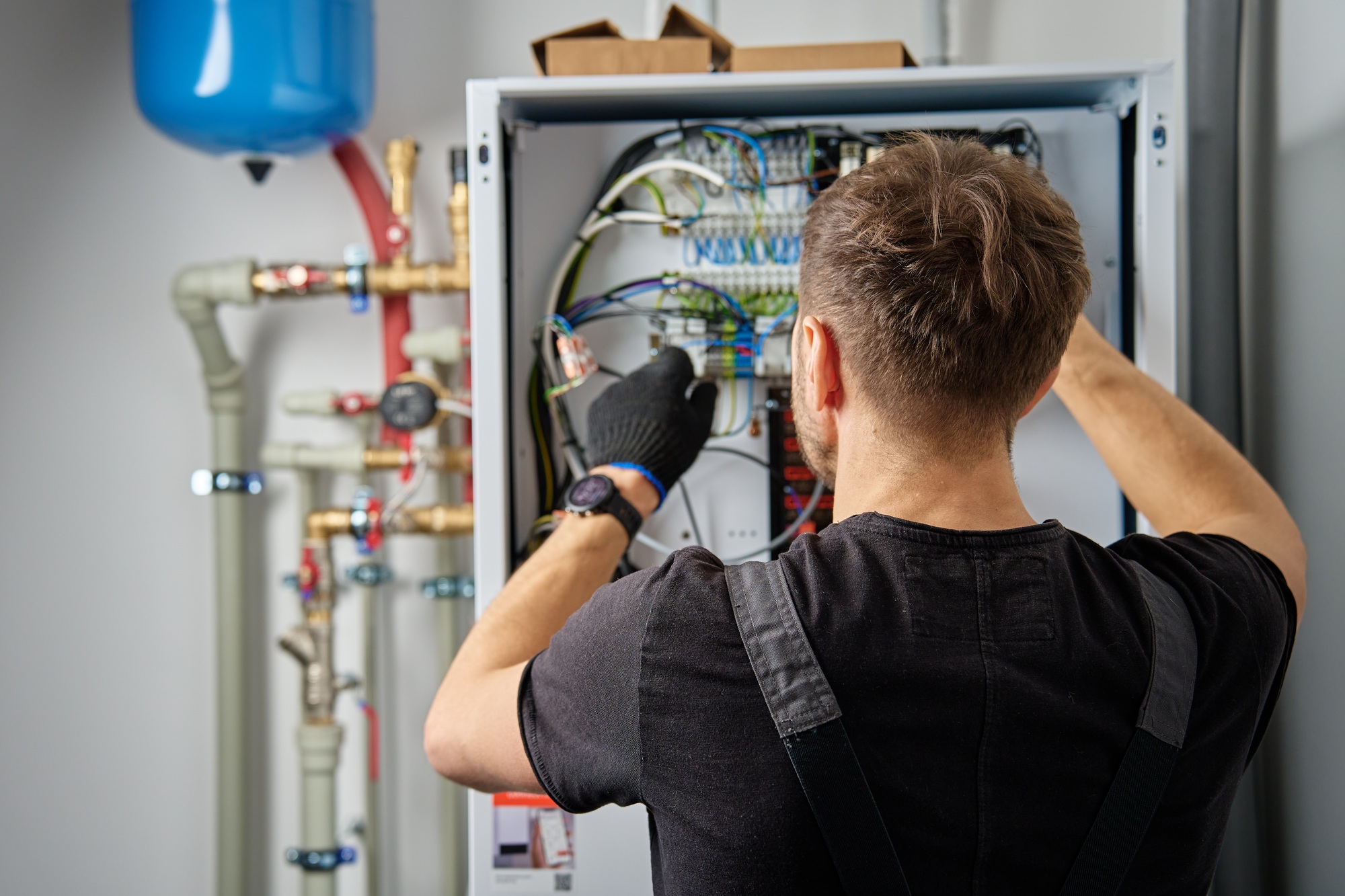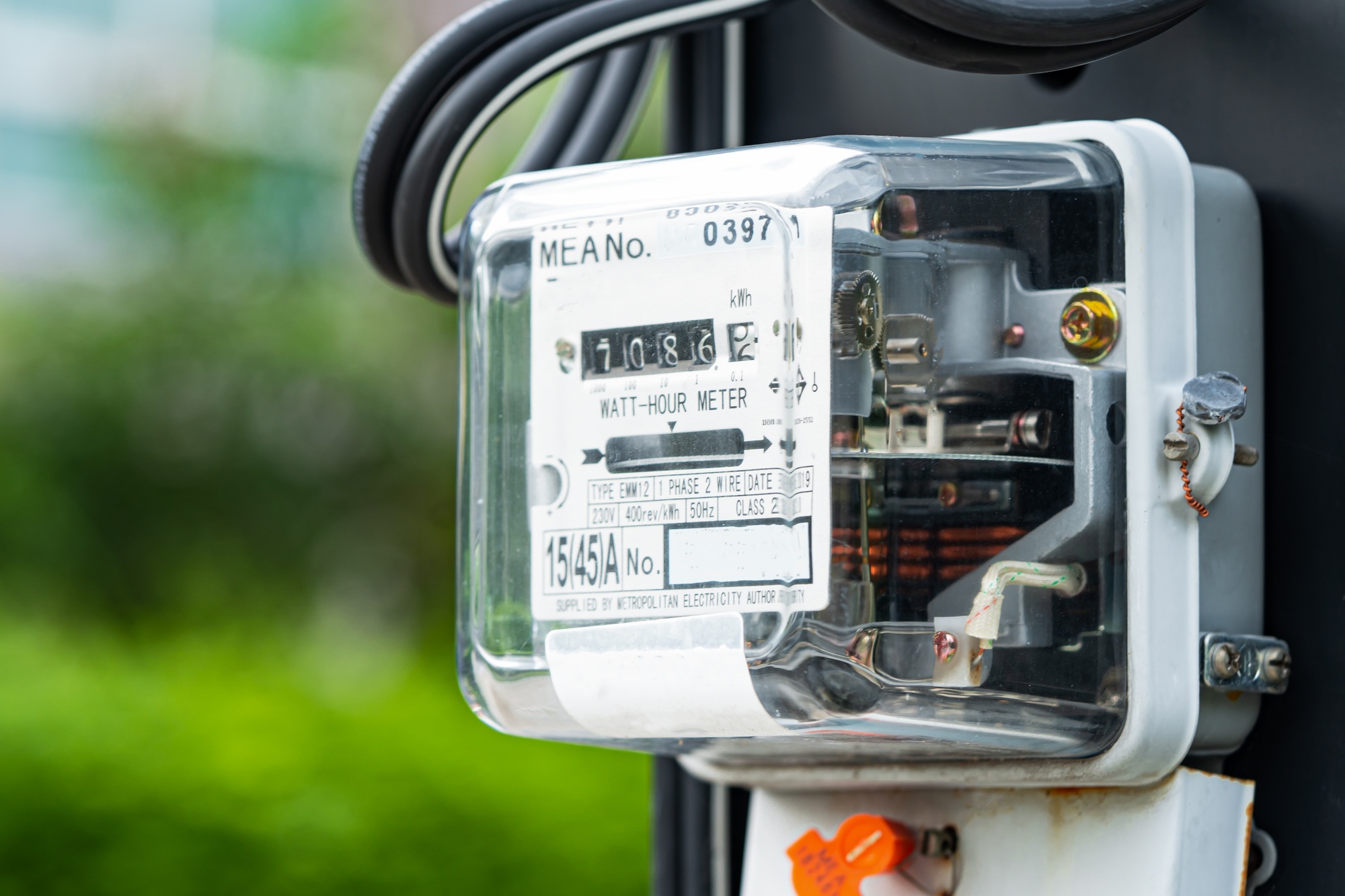
Canada’s Ambitious Urban Solar Power Project: Medicine Hat’s Saamis Solar Park
March 5, 2025
Where Is Solar Energy Used In Canada?
March 27, 2025In summary, here’s what you need to know:
- Efficiency: These systems are proven to work well in Canadian climates, even in extreme cold.
- Cost Savings: They may cost more initially, but lower energy bills and available incentives make them a smart long-term investment.
- Environmental Impact: Lower carbon emissions and reduced reliance on fossil fuels are significant benefits.
- Real-Life Success: Case studies from Ontario, British Columbia, and Alberta show that these systems deliver in real-world conditions.
- Future Growth: With ongoing innovations and strong government support, hybrid solar heat pumps are poised to become even more popular.
Sunny & Cool: Canada’s Energy Twist!
Hybrid solar heat pumps combine solar panels with heat pump technology to boost efficiency in our Canadian climate. They save energy, cut costs, and keep homes comfortable all year round. I’ve been in the solar game for 12 years, and I’ve seen how these systems can change home energy management. Here’s a no-nonsense look at how they work, their benefits, costs, and the overall impact for Canadian homeowners.
Introduction
Define the Tech; Canadian Relevance; Market Overview
Hybrid solar heat pumps mix two proven technologies: solar energy and heat pump systems. The solar panels, whether photovoltaic (PV) or solar thermal, capture energy from the sun. This energy then powers the heat pump, which transfers heat in or out of the home as needed.
In Canada, where winters can be brutal and summer heat can be surprising, these systems are gaining traction. They deliver a twofold benefit: lower utility bills and a reduced carbon footprint. With our government pushing for greener solutions and offering various rebates, hybrid systems are becoming an attractive option for many Canadian homeowners. The market is growing steadily, especially as more people look for reliable heating and cooling solutions that can handle our diverse climates.
How They Work
Solar Capture; Heat Pump Synergy; Efficiency Boost
Hybrid solar heat pumps operate on a simple principle. The solar panels collect energy from the sun. That energy is then used to run the heat pump. During winter, the heat pump extracts heat from the outside air—even in cold conditions as low as -25°C or -30°C—and moves it indoors. In the summer, it does the opposite, pulling heat out of the home to cool it.
A key feature of these systems is the integration between the solar panels and the heat pump. When solar panels generate excess heat, that energy boosts the heat pump’s performance. For example, an experimental solar-assisted heat pump water heater in Ontario recorded heating coefficients of performance (COP) between 2.5 and 3.1 on sunny days, compared to about 2.3 on overcast days. Even in poor sunlight conditions, the system can be more than twice as efficient as electric baseboards.
Field tests show that, in regions like the Prairies, solar energy can supply more than half of a heat pump’s heating needs on sunny winter days. In British Columbia, where winters are milder but cloud cover is more common, the heat pump still works reliably, using available solar gains to reduce overall energy consumption. In extreme cold snaps (for example, -35°C), backup heating may be necessary, but the solar boost can reduce its use.

Benefits for Canada
Cold-Climate Performance; Energy Savings; Cost Benefits
Hybrid solar heat pumps offer several advantages for Canadian homeowners:
- Reliable in Extreme Weather: Modern heat pumps are built to work in cold climates. Even when temperatures drop significantly, many systems can continue operating effectively. This is crucial for Canada, where winter temperatures often challenge heating systems.
- Energy Savings: Because these systems use renewable solar energy, homeowners can see a marked reduction in their monthly bills. In many cases, switching to a hybrid system can cut heating costs by 13% or more compared to conventional gas furnaces.
- Lower Carbon Footprint: Using solar power to run a heat pump means there are fewer carbon emissions. A study found that a hybrid heat pump system reduced CO₂ emissions by 38% compared to an old gas boiler, while gas consumption dropped by nearly 90%.
- Increased Energy Independence: Generating your own electricity through solar panels means less reliance on the grid. This added energy security is especially beneficial during peak demand periods or in areas prone to outages.
- Improved Home Comfort: Hybrid systems provide consistent and precise temperature control. This translates into fewer cold spots in winter and more effective cooling in summer.
- Cost Benefits Over Time: While the initial investment is higher, the long-term savings on energy bills can outweigh the upfront costs. With proper maintenance and optimal installation, these systems often reach a break-even point within a decade.
Technical Considerations
Installation Tips; Efficiency Data; Maintenance Needs
When thinking about installing a hybrid solar heat pump, there are a few technical details to consider:
- Proper Sizing: Selecting the right size for your home is critical. An oversized system may not perform efficiently, while an undersized system will struggle to keep up. Consider your home size, insulation quality, and typical outdoor temperatures.
- Efficiency Ratings: Look for models with high HSPF (Heating Seasonal Performance Factor) ratings. Higher ratings mean better energy efficiency and lower operating costs.
- Solar Panel Placement: Ensure your panels are positioned for maximum sunlight exposure. The ideal location is one that receives direct sunlight for most of the day, free from shadows.
- Space Requirements: Solar panels require enough roof or ground space. Plan your installation so that the panels have an optimal setup without interfering with other home systems.
- Integration with Existing Systems: Many hybrid systems can integrate with existing HVAC setups. This minimizes the need for major renovations and can lower overall installation costs.
- Regular Maintenance: Hybrid systems need periodic checks, such as cleaning solar panels and monitoring refrigerant levels. Overall, maintenance for these systems is less intensive than for traditional heating and cooling setups.
- Backup Heating: In extremely cold weather, some hybrid heat pumps may need to switch to backup heating. It’s essential to have a plan for these scenarios, whether that means a gas furnace or another backup system.
Cost Analysis & Incentives
Upfront Costs; ROI Metrics; Government Rebates
Cost is a major factor for many homeowners considering a hybrid system. Here’s a straightforward breakdown:
- Upfront Costs: A standard air-source heat pump installation in Canada can range from $6,000 to $25,000, depending on size and complexity. Adding solar panels increases the cost further. For example, a PV array sized to power a heat pump can cost between $10,000 and $20,000 before rebates. While these numbers may seem high, consider that a hybrid system could be less expensive than installing a geothermal system.
- Operating Costs: The efficiency of heat pumps means they can deliver 2–4 kWh of heat for every kWh of electricity used. In many cases, the annual operating cost is significantly lower than that of gas furnaces or electric resistance heating. Studies show that switching from an oil furnace to an electric heat pump can save between $1,500 and $4,700 per year.
- Total Ownership: Over a lifespan of 15 to 20 years, the long-term savings from reduced energy bills can offset the higher upfront costs. Many homeowners see a break-even point in under 10 years when factoring in available incentives.
- Government Incentives & Rebates:
- Federal Programs: Programs like the Canada Greener Homes Grant have offered $2,500–$5,000 for heat pump installations. The Oil to Heat Pump Affordability Program provides up to $10,000 for lower-income households. There’s also the Greener Homes Loan, which offers interest-free financing up to $40,000.
- Provincial Programs: For example, British Columbia’s CleanBC program offers rebates up to $2,000, or $5,000 for income-qualified households. Ontario’s new Home Renovation Rebate Program, launching in January 2025, will cover up to 30% of eligible costs, including heat pumps and solar panels.
- Local Incentives: Many cities offer additional rebates, property-assessed clean energy financing, or net metering policies that allow homeowners to earn credits for excess solar generation.
These incentives can reduce the effective cost of a hybrid system by thousands of dollars, making it more attractive for many Canadian homeowners.
Real-Life Applications
Canadian Case Studies; User Experiences; Vitaliy’s Insights
Real-world examples provide the best insight into how these systems perform. Here are a few notable cases:
- Markham Power.House Pilot (Ontario): In 2023, a pilot project in Markham equipped ten homes with a hybrid setup. Each home had a 3.3 kW solar PV array, battery storage, an EV charger, and a hybrid heating system combining an air-source heat pump with a gas furnace backup. Results showed a 40% reduction in greenhouse gas emissions and noticeably lower energy bills. Homeowners reported reliable performance even during the coldest nights.
- SunPump Residential Systems (British Columbia): A Vancouver-based startup, SunPump, developed a solar-assisted direct exchange heat pump. Early adopters in BC report consistent heating and lower operating costs. One monitored case showed that the system achieved the highest seasonal COP and the lowest annual operating expense among several heating systems tested.
- Drake Landing Solar Community (Alberta): Although not a single home installation, this district energy system in Okotoks, Alberta, is a standout example. With 800 solar thermal collectors and seasonal thermal storage, over 90% of the community’s heating needs are met by solar energy—even when winter temperatures drop to -30°C. This project proves that solar heat, when stored and distributed properly, can power a community reliably.
- My Own Experience: I’ve installed a hybrid system on my own home. I noticed a significant reduction in my heating bill over the first winter. The system handled cold snaps without a hitch, and maintenance turned out to be straightforward. This firsthand experience confirms that, while the installation cost is higher, the long-term benefits are tangible.
Environmental Impact
Emissions Data; Sustainability Stats; Eco Benefits
Hybrid solar heat pumps contribute to a cleaner environment. Here’s how:
- Reduced Carbon Emissions: These systems generate heat without direct carbon emissions. One study showed that a hybrid system could reduce CO₂ emissions by 38% compared to an old gas boiler. In another case, replacing a gas furnace with a hybrid heat pump resulted in nearly 90% less gas consumption.
- Decarbonizing Buildings: As Canada pushes toward its climate targets, retrofitting older homes with renewable technology becomes key. Hybrid systems provide a smoother transition from fossil fuels to renewable energy.
- Supporting a Greener Grid: With Canada’s electricity grid getting cleaner, the indirect emissions from using electricity to run heat pumps are also declining. This means that over time, the environmental benefits of hybrid systems will only grow.
- Sustainability Stats: Studies from reputable sources show that over the lifespan of a hybrid system, the reduced operating emissions can be significant. For example, a household that saves up to $4,700 annually in heating costs also benefits from lower overall emissions—a win for both the wallet and the planet.
Future Trends in Canada
Market Innovations; Policy Shifts; Tech Evolution
The future of hybrid solar heat pumps in Canada looks bright. Here’s what we can expect:
- Increasing Adoption: Although only about 7% of Canadian homes used heat pumps as their primary heating source in 2023, this number is rising. Federal programs have already spurred over 47,000 installations, and more homeowners are considering this technology as awareness grows.
- Policy and Climate Drivers: With rising energy prices and a push for net-zero homes by 2030, government policies are strongly supporting heat pump adoption. New building codes in cities like Vancouver require zero-emission heating systems for new homes. As a result, the market for hybrid systems is expected to grow.
- Technological Innovations: Ongoing research is improving the design and performance of solar-assisted heat pumps. Innovations include dual-mode solar thermal collectors that adapt to different weather conditions, and experimental systems that integrate thermal storage. Direct DC solar heat pumps, which connect directly to photovoltaic panels, promise even higher efficiency.
- Bundled Solutions: Manufacturers are starting to offer package deals that combine a solar PV system with a heat pump installation. This approach simplifies the process for homeowners and can lower overall costs.
- Service-Based Models: Emerging concepts like Heat-as-a-Service (HaaS) are making these systems more accessible by reducing upfront costs. Under HaaS, homeowners pay a monthly fee that covers installation, maintenance, and even equipment upgrades.
- Market Outlook: Global projections suggest that the solar-assisted heat pump market will exceed $8 billion USD by 2031. With Canada’s large heating needs and increasing government support, our share of this market is likely to grow steadily.
FAQs & Troubleshooting
Common Queries; Expert Tips; Practical Advice
Here are some frequently asked questions and practical tips for anyone considering a hybrid solar heat pump:
- What is the average cost of a hybrid solar heat pump system?
Generally, these systems cost between $10,000 and $20,000. This price varies with system size, the number of solar panels, and the type of heat pump used. - Are these systems reliable in extreme cold?
Yes, many modern systems can operate in temperatures as low as -30°C. However, on extremely cold days, a backup heating source may kick in. - How much maintenance is required?
Maintenance is relatively low compared to traditional systems. Regular cleaning of the solar panels and periodic checks of refrigerant levels are usually sufficient. - What size system do I need?
The right size depends on your home’s heating load, local climate, and insulation levels. Consult with a certified installer to determine the best fit for your needs. - Can these systems integrate with my current HVAC setup?
In many cases, yes. Hybrid systems can often be integrated with existing ductwork or radiators, minimizing installation disruptions. - What kind of rebates or incentives are available?
Canadian homeowners can access multiple programs. Federal grants, provincial rebates, and local initiatives can collectively reduce the cost by thousands of dollars. Check with your local energy provider or government website for current details. - What if solar output is low on cloudy days?
The system is designed to draw power from the grid when solar energy is insufficient. It will still operate efficiently, albeit with slightly lower performance.
Conclusion
Hybrid solar heat pump systems offer a solid option for Canadian homeowners. They deliver efficient heating and cooling, even in our challenging climate. While the upfront costs can be higher, the long-term energy savings and environmental benefits make these systems an appealing investment.
From the technical integration of solar panels with heat pumps to the benefits of lower carbon emissions and energy independence, hybrid systems provide a reliable, sustainable solution. Government rebates and incentives further enhance their value, helping to offset initial costs and make green energy more accessible.
I’ve seen firsthand how these systems work, and my experience confirms that with proper installation and maintenance, they perform well in our Canadian winters and summers. Whether you’re looking to reduce your energy bills or lower your carbon footprint, a hybrid solar heat pump system could be the right choice.
Canada is moving toward cleaner energy, and this technology plays a key role. As policies tighten and technology improves, we can expect these systems to become even more cost-effective and widespread. For homeowners seeking a practical, long-term solution to home heating and cooling, hybrid solar heat pumps represent a smart, sustainable choice.
Canada goes Solar isn’t just a slogan—it’s a commitment to smart, efficient, and sustainable living. Hybrid solar heat pumps embody that commitment by providing a way to make the most of our abundant sunlight while meeting our heating and cooling needs in one integrated system.
If you’re considering a hybrid system, do your homework. Evaluate the available rebates, consult with experts, and weigh the long-term savings against the initial investment. With the right approach, you can enjoy lower energy bills, a more comfortable home, and contribute to a greener future for Canada.
- February 27, 2025
- 30 mins read
- In Solar Energy
- March 4, 2025
- 14 mins read
- In Solar Energy
- March 5, 2025
- 15 mins read
- In Solar Energy






